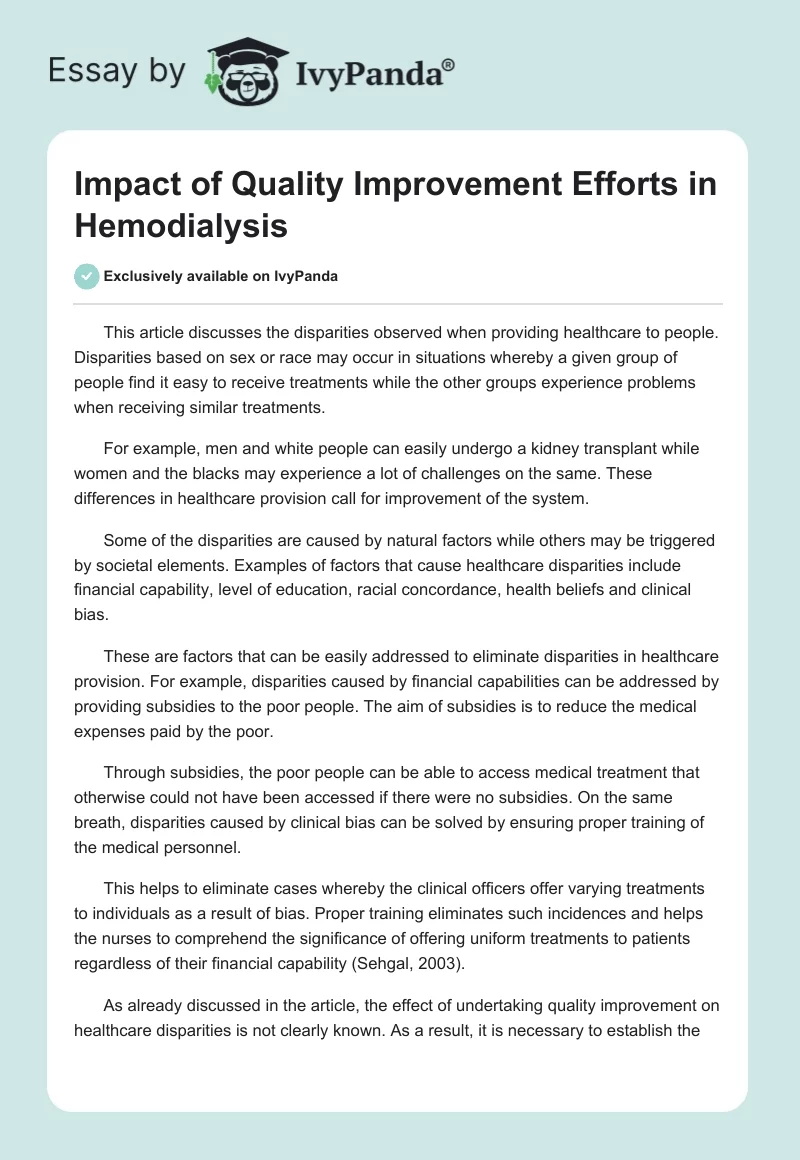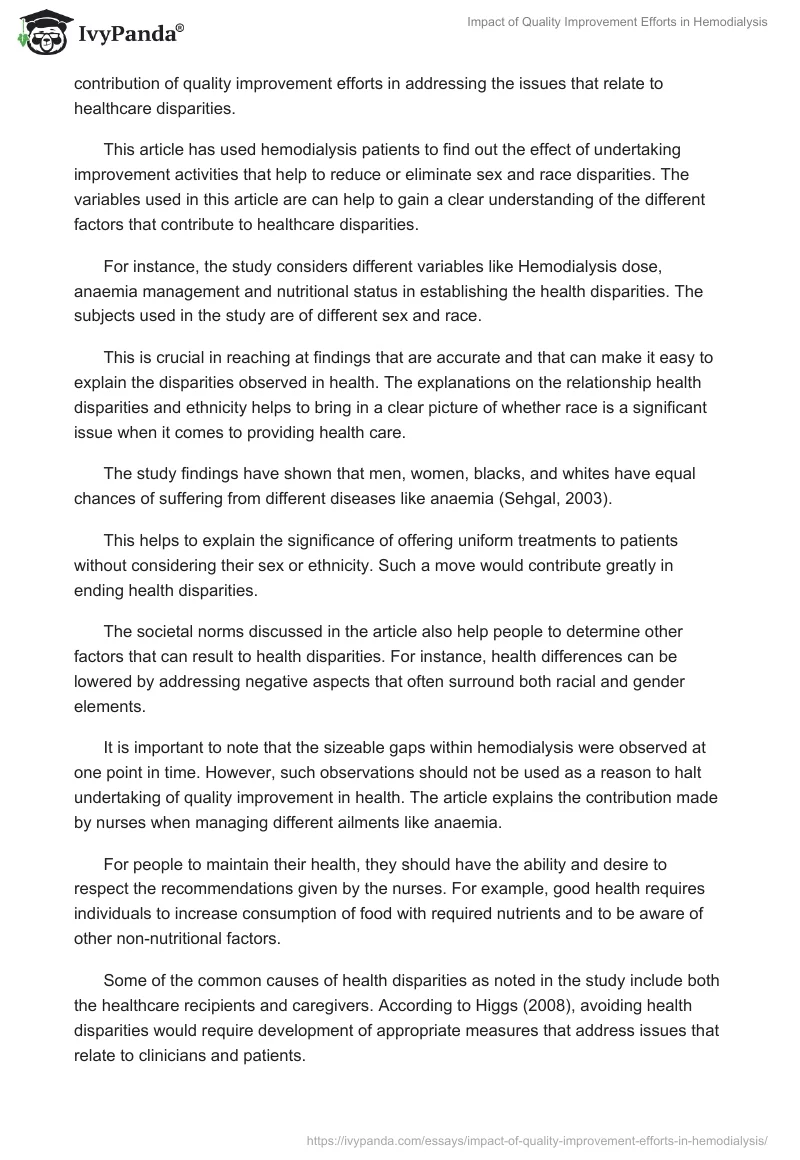This article discusses the disparities observed when providing healthcare to people. Disparities based on sex or race may occur in situations whereby a given group of people find it easy to receive treatments while the other groups experience problems when receiving similar treatments.
For example, men and white people can easily undergo a kidney transplant while women and the blacks may experience a lot of challenges on the same. These differences in healthcare provision call for improvement of the system.
Some of the disparities are caused by natural factors while others may be triggered by societal elements. Examples of factors that cause healthcare disparities include financial capability, level of education, racial concordance, health beliefs and clinical bias.
These are factors that can be easily addressed to eliminate disparities in healthcare provision. For example, disparities caused by financial capabilities can be addressed by providing subsidies to the poor people. The aim of subsidies is to reduce the medical expenses paid by the poor.
Through subsidies, the poor people can be able to access medical treatment that otherwise could not have been accessed if there were no subsidies. On the same breath, disparities caused by clinical bias can be solved by ensuring proper training of the medical personnel.
This helps to eliminate cases whereby the clinical officers offer varying treatments to individuals as a result of bias. Proper training eliminates such incidences and helps the nurses to comprehend the significance of offering uniform treatments to patients regardless of their financial capability (Sehgal, 2003).
As already discussed in the article, the effect of undertaking quality improvement on healthcare disparities is not clearly known. As a result, it is necessary to establish the contribution of quality improvement efforts in addressing the issues that relate to healthcare disparities.
This article has used hemodialysis patients to find out the effect of undertaking improvement activities that help to reduce or eliminate sex and race disparities. The variables used in this article are can help to gain a clear understanding of the different factors that contribute to healthcare disparities.
For instance, the study considers different variables like Hemodialysis dose, anaemia management and nutritional status in establishing the health disparities. The subjects used in the study are of different sex and race.
This is crucial in reaching at findings that are accurate and that can make it easy to explain the disparities observed in health. The explanations on the relationship health disparities and ethnicity helps to bring in a clear picture of whether race is a significant issue when it comes to providing health care.
The study findings have shown that men, women, blacks, and whites have equal chances of suffering from different diseases like anaemia (Sehgal, 2003).
This helps to explain the significance of offering uniform treatments to patients without considering their sex or ethnicity. Such a move would contribute greatly in ending health disparities.
The societal norms discussed in the article also help people to determine other factors that can result to health disparities. For instance, health differences can be lowered by addressing negative aspects that often surround both racial and gender elements.
It is important to note that the sizeable gaps within hemodialysis were observed at one point in time. However, such observations should not be used as a reason to halt undertaking of quality improvement in health. The article explains the contribution made by nurses when managing different ailments like anaemia.
For people to maintain their health, they should have the ability and desire to respect the recommendations given by the nurses. For example, good health requires individuals to increase consumption of food with required nutrients and to be aware of other non-nutritional factors.
Some of the common causes of health disparities as noted in the study include both the healthcare recipients and caregivers. According to Higgs (2008), avoiding health disparities would require development of appropriate measures that address issues that relate to clinicians and patients.
In addition, patients should avoid behaviours like skipping medication. Such behaviours would increase on the possible recovery period and can also lead to death. Medical experts should be able to communicate to patients the importance of adhering to the advices given by medical officers and the need to take the drugs as prescribed by the doctor.
In conclusion, it is evident that the various methods discussed in the article for improving quality are extremely crucial in reducing sex and race disparities in health. However, there is a great need of carrying out further improvements to help eliminate or reduce health disparities especially on hemodialysis patients.
Improvement activities should focus more on eliminating sex and race differences to ensure uniform provision of healthcare. In addition, various health outcomes say on women, men, blacks, and whites should be observed in a special way.
This process should go hand in hand with appropriate development of quality improvement methods especially that relate to sex and race. If the two latter factors are addressed, then health disparities will equally be minimised.
References
Higgs, J. (2008). Clinical reasoning in the health professions. Amsterdam: BH/Elsevier.
Sehgal, A.R. (2003).Impact of Quality Improvement Efforts on Race and Sex Disparities in Hemodialysis. American Medical Association 289(8), 996-1000.


